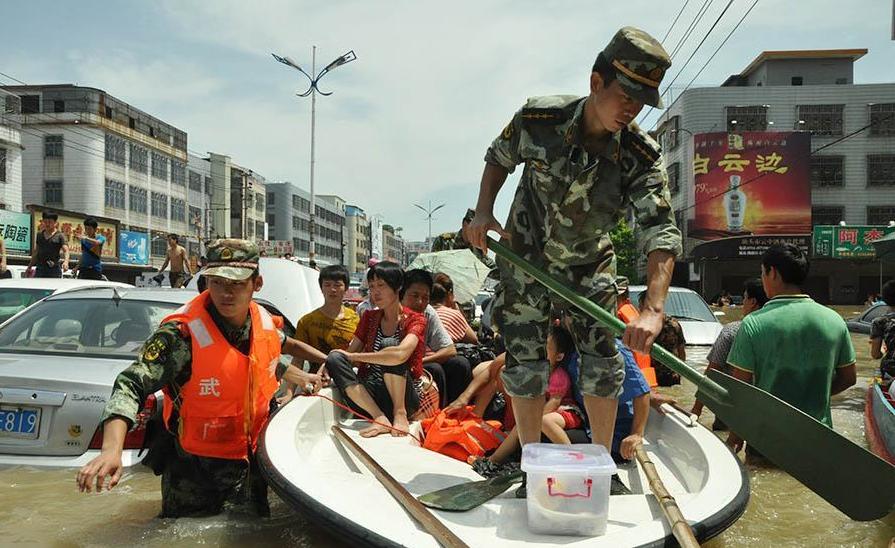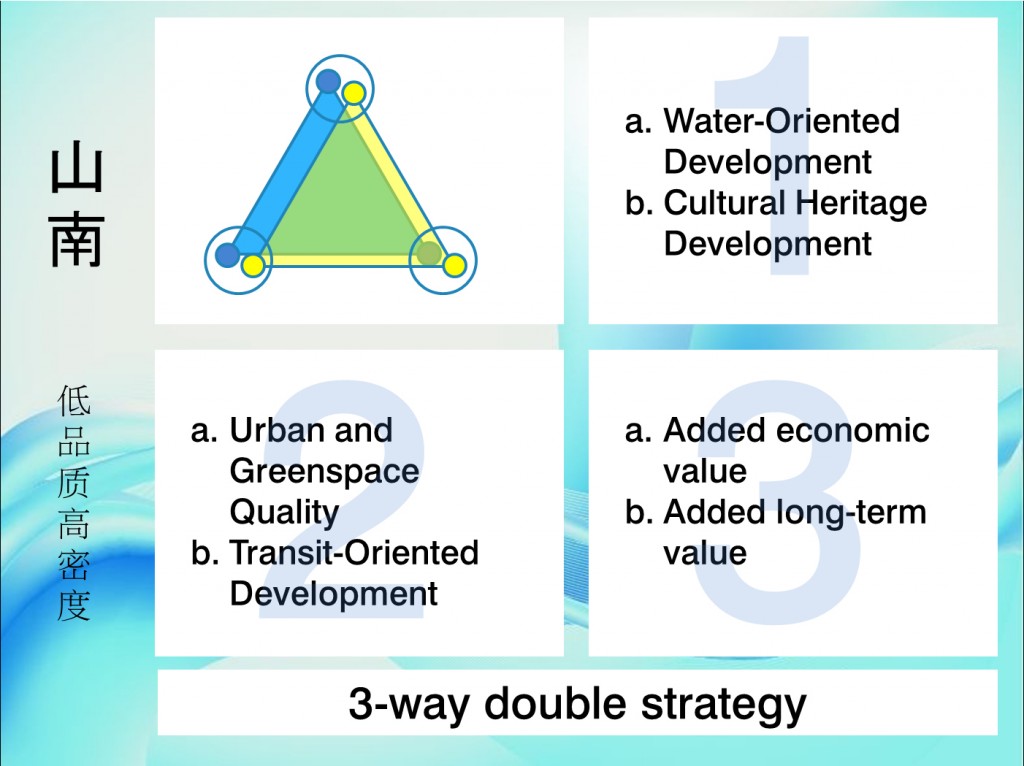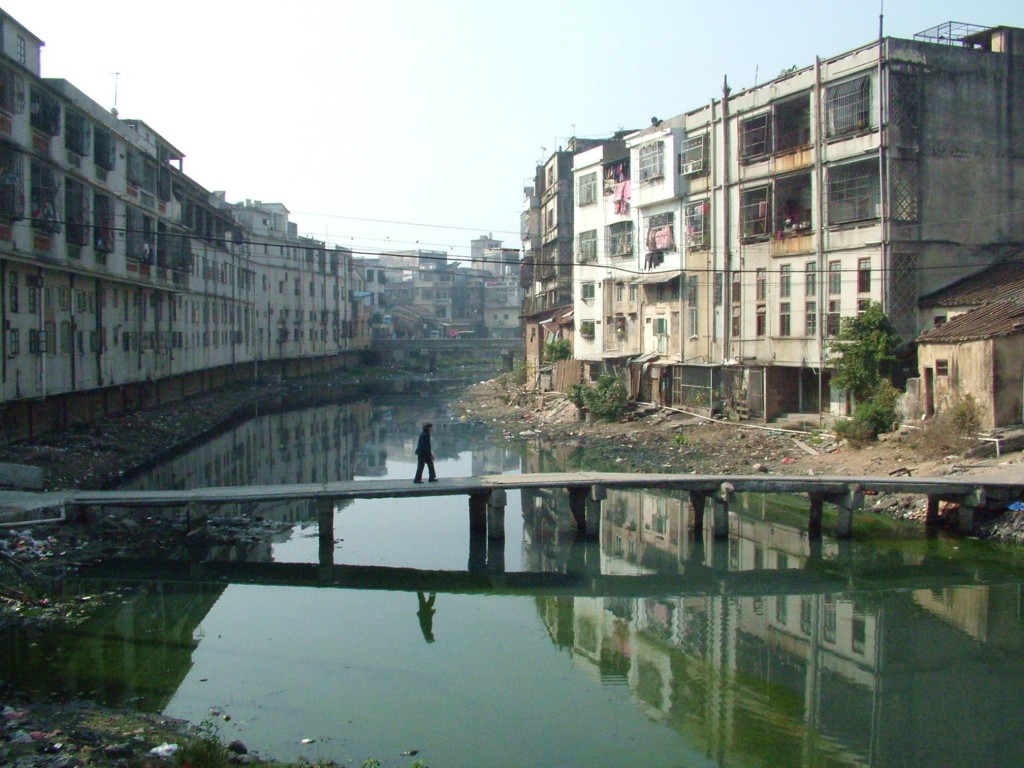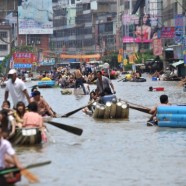Strategy for the Shan Nan Region
Invited by the City of Shantou, the Shantou Urban and Rural Planning Bureau and the Institute of Urban Planning and Design of the Nanjing University, a Team of Dutch Experts has visited South Shantou 20-26 January 2013 for an intensive and creative workshop for the organic regeneration of the Desakota Area. The results of this workshop provided relevant and effective ideas and concepts for the Shantou Master Plan, the follow-up of the Shantou Development Plan. The Dutch Team of Experts identified five specific development orientations for the Shan Nan Desakota Area: water, cultural-heritage, urban and green space, landscape and transit. Collectively these orientations create a new vision for this region based on the “smart development” principles efficient use and re-organization of land resources, full use of urban services, mix of uses, transportation options, detailed human-scaled design and implementation. In their TDE Research and Strategy Report, the Dutch Team of Experts defined the “three-way double strategy” for the Shan Nan Desakota Area. The three-way strategy implies that there are three major aspects. The double strategy implies that each aspect has two closely connected parts. Water oriented development is closely related with cultural oriented development. The improvement of the quality of urban and green spaces is closely related with transit-oriented development. And added economic value is closely related with added long term value and increase in property values.
In their TDE Research and Strategy Report, the Dutch Team of Experts defined the “three-way double strategy” for the Shan Nan Desakota Area. The three-way strategy implies that there are three major aspects. The double strategy implies that each aspect has two closely connected parts. Water oriented development is closely related with cultural oriented development. The improvement of the quality of urban and green spaces is closely related with transit-oriented development. And added economic value is closely related with added long term value and increase in property values.

In the TDE Research and Strategy Report, the aspects from the “three-way double strategy” are worked out in detail in five sections and in recommendations with implementation actions.
- The Water-Oriented Development section proposes a regenerative design approach to restore the water system as a key component to revitalising the residential, agricultural, commercial, industrial land and environment.
- The Cultural-Heritage Development section proposes a comprehensive approach to integrate traditional villages with modern urbanization.
- The Urban and Green Space Development section proposes a variety of innovative approaches for urban agriculture.
- The Landscape Development section proposes an integrated approach to land use and development planning.
- The Transit-Oriented Development section proposes multi-modal approaches to mobility, access, connectivity, sustainable safety arterials and residential areas.
- The resulting vision is a vibrant community that has a harmonious balance of economic, environmental and social values. The recommendations outline an adaptive strategy and a strategic approach to development along with implementation actions.
In the first part of the TDE Research and Strategy Report, the Team of Dutch Experts has described its ideas and visions for the Shan Nan Desakota Area. Water-oriented development, the potential cultural-heritage of the villages, landscape between the villages, urban and green space development in relation with transit-oriented development are firstly tested and evaluated on a larger scale. The Team of Dutch Experts did that for the whole Shan Nan Desakota Area as well as for a specific transect between the hills in the south and the river in the north. In this report, three case studies are elaborated, for Si-He and Hua-Yao village and the Xia-Shan covered market.
 Si-He Village has significant elements related to water-oriented development and the reintegration of the delicate canal system. Its distinctive cultural heritage dates back to the Song Dynasty. The Hua-Yao village has potential for intensive greenhouse horticulture and wellness tourism. There are also opportunities to add long-term value and significantly increase property values. The Xia-Shan covered market provides an opportunity for the development of green space and for transit-oriented development.
Si-He Village has significant elements related to water-oriented development and the reintegration of the delicate canal system. Its distinctive cultural heritage dates back to the Song Dynasty. The Hua-Yao village has potential for intensive greenhouse horticulture and wellness tourism. There are also opportunities to add long-term value and significantly increase property values. The Xia-Shan covered market provides an opportunity for the development of green space and for transit-oriented development.
The Team of Dutch Experts (TDE) was lead by Martin Dubbeling, urban planner and designer. Other team members are dr. Govert Geldof, water management expert, Wouter Vos, landscape architect, Richard ter Avest, mobility and transport expert, Ric Stephens, urban planner and expert on community planning, Sébastien Goethals, architect and expert on urban agriculture, and Brechtje Spreeuwers, architect and sinologist.









